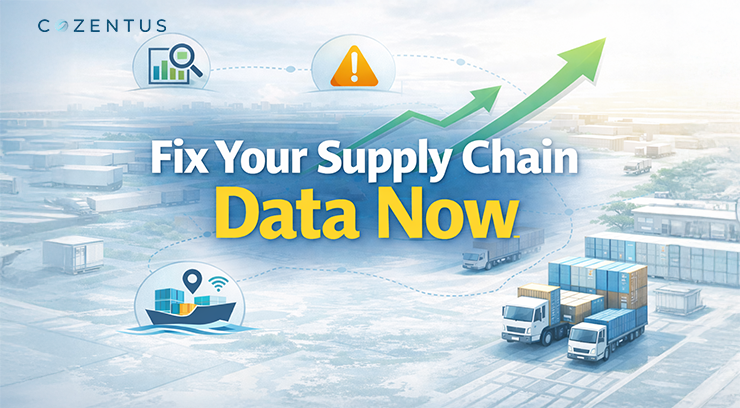Most organisations today function and connect with consumers in significantly different ways than they did a few years ago. Customers, for example, may investigate their alternatives, learn about competing companies, and make purchases from the comfort of their own homes.
Even though this has resulted in a lot of change and adjustment for companies, many of these developments have been positive. It is because digital transformation and consumer experience are mutually reinforcing.
The progressive emergence of big data technology and the ongoing growth of numerous work process technologies have given rise to new aspects. Artificial Intelligence, Internet of Things (IoT) and other connected devices have significantly influenced supply chain visibility solutions on a strategic level. It has accelerated the progress of digital transformation in all elements of supply chain visibility solutions, such as finance, procurement, and warehousing.
If you are unfamiliar with the concept, "digital transformation" refers to how firms adapt to new technologies and customer demands. It's an umbrella word for the many adjustments that businesses have had to (and will continue to make) stay up with technological improvements. With the increasing need for real time information about transactions, data exchanges and customer interactions , digital transformation is an unavoidable progression that every firm, regardless of industry, must go through. PWC study indicates that 60% of senior executives feel digital transformation would be crucial for corporate development in 2022.
So, suppose your company hasn't already begun to embrace digital technology. In that case, it won't be long until you need to make changes to enhance the customer experience you provide and stay up with your competition.
What do digital customers today expect?
You can't expect your digital transformation efforts to succeed unless you have a firm grasp on what your target customers want. Here are four generalised consumer trends:
- Online-first interactions: An online presence allows clients to contact companies quickly through their chosen channels. According to studies, the frequency of digital purchases has increased by 160% in the last two years. To keep ahead of the competition, businesses must adopt a digital-first approach.
- Speed: More than ever, the want-it-now mentality determines consumer behaviour. 80% of consumers want firms to respond quickly. You cannot afford to keep a client waiting today since time saved equals money earned.
- Omnichannel experiences: If there's one thing that today's consumers despise more than being kept waiting, it's uneven, fragmented experiences. The quality of the knowledge you provide directly impacts your bottom line. Average customer retention rates for omnichannel and multichannel providers are 89% and 33%, respectively.
- Messaging and mobile-first conversations: Customers increasingly value the convenience and simplicity of mobile-first interaction. Your clients want you to communicate with them using their preferred channels and mobile applications, such as WhatsApp, Apple Business Chat, LINE, or Facebook Messenger.
In addition to knowing about consumer trends, you must grasp why digital transformation is now more critical than ever, thanks to new forms of working that have emerged in the last two years. Organisations must use digital transformation to understand today's buyers better, interact with them, and exceed their expectations via a multichannel customer experience.
With all of the above said and done, here is an interesting find. More than $900 billion of the $1.3 trillion spent on digital transformation has been squandered. What is making specific digital transformation initiatives successful while others fail? Stay tuned, as in my next blog, I will share five strategies to get your firm started with digital transformation to help you succeed.
Recent Post
Subscribe to our newsletter
Stay updated on latest trends and news in the supply chain and logistics industry








